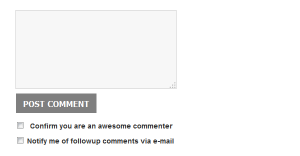It is important to protect your website from all kinds of situations. Spam Bot is one of many different malicious bot types disrupting normal operation of websites. It is meant to collect data, including emails, and place links to spammy sites. Unfortunately, the main result of such malicious actions is the lowering of pages ranking in search engines. That is why no webmaster or site owner could afford to neglect spam bots.
Hidden from fields
There are several ways to protect your resource from bots and avoid potential damage if the comment section is an essential site option that couldn’t be disable.
You could paste an extra input field to your subscription form and hide it from real users by CSS or JavaScript. While your visitors leave the additional field empty and pass the test of humanity, bots, that can’t read CSS/JavaScript, will filled out it automatically and identify themselves.
You should constantly rename them by some PHP-functions to make it more difficult to detect these hidden fields by bots. Sometimes this method of operation is called “invisible captcha”.
You may have to manually write some code (snippets could be easily found in the web) or implement appropriate plugins using this model of thwarting spam bots. One of them is Honey Pot for WordPress that crafts a hidden fields and rename them regularly making it simple to ban bots or catch them in a spam trap of infinite loop. Another one with similar mechanism is WordPress Antispam Bee plugin.
To detect a spam-bot and spammer there is a method of invisible check box that engage your visitors without annoying. The user could be offered to confirm his good intentions by visible “I’m not a spammer” check box while an invisible “I’m spammer” check box will be added to the submission form or comment section.
Anti-spam verification questions and Invisible Captcha

Still actual defence method is adding to the form some verification questions. Before the user is allowed to complete the registration process, you can introduce to him some custom questions that couldn’t be answered correctly by spam-bots.
Briefly about some other ways to trick bots. You could install Invisible Captcha plugin that check if Submit Button was clicked. To submit form, bots would use some program solutions instead press the button as humans.
As hackers continue to exhibit flexibility and to maintain efforts towards the bots improvement, the other world needs to be responsive and confronts the challenges by creating new elegant methods of defence.











